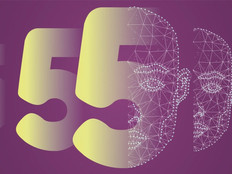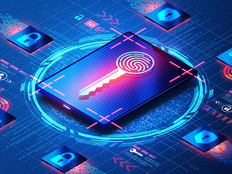Big Brother Gone Good
With monitoring and surveillance systems increasingly a part of modern life, the specter of Big Brother makes many people uneasy. But the same technologies that force us to rethink notions of privacy are also making us safer and relieving some of our daily stresses, say security experts and the companies that develop the systems.
Ignition interlock services company Smart Start keeps a running tally on its website of the times its technology has blocked a motorist with an over-the-limit blood alcohol level from starting a vehicle — about 5.24 million from the company’s inception in 1992 to July of this year.
Smart Start CEO Lamar Ball, a retired banker, joined the company in 2000 because of the combination of its business potential and public service.
“We’ve worked very hard to expand the company into many more states and jurisdictions,” says Ball. “It was interesting to me because profit incentives and public good were tied together.”
Basic interlock technology connecting breathalyzers to electronic ignition systems has been around for years without gaining much traction. But improvements in the devices and the reporting technology that delivers monitoring information to courts, along with heightened public awareness of the dangers of drunk driving, have increased the number of courts that use ignition interlock. Smart Start serves jurisdictions in 37 states, with expansion into five more projected before the end of the year.
Smart Start’s customers are courts that mandate the use of ignition interlock devices by motorists convicted of driving while intoxicated. With Smart Start technology in place, each attempt to start a vehicle is electronically recorded. Threshold levels for the breathalyzer and reporting parameters are customized for each jurisdiction. Convicted drivers are required to present their devices to a Smart Start franchise site once a month, so that the data on attempted starts can be downloaded and delivered to the appropriate court.
Smart Start is the fastest-growing ignition interlock service in the nation, claims Ball, who identifies technology as the company’s edge. A new photo ID capability on the device verifies who’s blowing into the breathalyzer, while advanced tracking technology lets the company know where all its units are.
Data from interlock devices is collected at Smart Start franchises and transferred over the Internet to corporate headquarters in Irving, Texas, says CIO Thomas Allison. To ensure security and reliability, the company issues thin-client PCs to franchisees (see sidebar). Once the data is gathered, it is tweaked to meet the specific jurisdiction’s needs and then delivered by whatever technology the customer can accommodate, Allison says.
You Are Being Watched
There’s not much controversy over a service that monitors convicted offenders and keeps drunks off the road. The same can’t be said about the proliferation of visual surveillance systems in public places, says James Black, senior security consultant for TRC Security in Irvine, Calif.
“One of the biggest changes in my job in recent years is that I spend a lot more time at neighborhood awareness meetings, easing people’s fears about surveillance,” he says. With the price of even the most advanced surveillance technologies dropping, a growing number of municipalities and college campuses are joining businesses and the Department of Homeland Security in using video surveillance systems to save money and protect assets, says Black. The hottest technology segment in surveillance is video analytics, sophisticated software used to automatically identify illegal or suspicious behavior that shows up on video.
“Analytics brings another tool to the toolbox for security,” says Black. “There’s always been a need for integrated security systems, and video analytics helps make the camera the center of the system. The technology is mostly being used at its most basic level, [so] there is a lot more capability to be tapped.”
Craig Chambers, president and CEO of Cernium in Reston, Va., says most of his company’s customers use a very small set of available features in the company’s analytics system.
“A lot of the early implementations required a scientist to program the filters to notice signs of potential threats,” says Chambers. “Our company is a leader in creating an application layer that helps people think about security and then apply the analytics.”
Although its customers include 40 U.S. airports and a handful of federal government agencies, Cernium has enlarged its focus beyond homeland security to college campuses, hospitals, state and local governments and private businesses, including a Boeing manufacturing site, says Chambers.
Cernium’s analytics are used both forensically and to raise warning flags, Chambers says.
Land of Traffic
TrafficLand’s business also relies on surveillance cameras, but rather than stopping bad guys, the company’s mission is to guide good citizens through snarling traffic, says CEO Larry Nelson, who founded the Fairfax, Va., company and website in 2001.
TrafficLand makes agreements with government agencies — usually state departments of transportation — to acquire the video from roadside cameras. The company then pushes the video out to its own website, www.trafficland.com, and other public sites.
The service provides traffic snapshots for travelers to access by e-mail immediately before they leave, or on their cell phones from the road. TrafficLand pulls video from more than 6,000 cameras in 40 jurisdictions ranging from its first DOT partner in Northern Virginia to Piccadilly Circus in London.
The original agreements say video must be free to the public, so TraffficLand makes its money through advertising and distributing the video to media partners, such as TV stations.
“We love the e-mail we get from people who use the service,” says Nelson. “It’s very satisfying to be supplying information that makes commuters’ lives easier and helps first responders.”
Thin Clients Offer More Reliable Reporting
Smart Start technology most dramatically serves the public good when a person who’s had too much to drink blows into the company’s SSI-1000 breath alcohol monitor and is kept off the road. Almost as important to the courts that use Smart Start services are monthly reports tracking data on each time a convicted DWI offender tries to start a vehicle, whether successful or not.
With 400 franchise offices in 37 states gathering information, ensuring an uninterrupted flow of reliable data is a daunting challenge — one that Smart Start has met using thin-client technology, says CIO Thomas Allison.
“We don’t have the ability to manage them over a network — they’re disconnected other than by the Internet,” says Allison. “Thin clients give us an easy way to lock PCs down.”
Smart Start issues each franchise a Hewlett-Packard thin-client computer. The company has three generations of the devices deployed in the field. Allison and his staff reimage the thin clients before they ship them out to franchises, loading the company’s Smartrac and SmartLog software. Software updates are sent out on USB drives. The aim is to maintain control of the computing device to protect sensitive data, says Allison.
“Our PCs are often outside. They get knocked around, and before we used thin clients we had tons of failures,” he says. “The thin clients provide reliability. There are no fans, no moving parts and almost no failures.”






